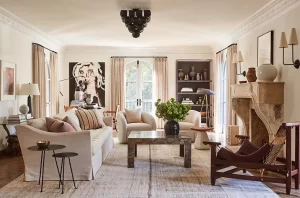Perhaps you are an avid fan of Shaun Attwood or Joe Rogan and you fancy becoming a podcast host; create your own brand of intellectual dialogue with relevant people. Of course, the most important aspect of setting up a podcast is the studio, the venue that hosts the show and in this short article, we outline what you will need to create your very own podcast studio.
Location
You’re probably thinking to clear out the spare room, give it a coat of paint, add some wall art and you’re good to go – the critical aspect for a podcast studio is sound and an empty room usually leads to echoes. The best podcast studios are full of stuff and with some pro wall sound insulation (called ฉนวนกันเสียงผนังเบา in Thai), you can cut out all exterior noise; move furniture around a do sound checks to find the best layout. Some podcast hosts simply arrange a corner of the lounge or dining room, while others prefer the mahogany study look. If you cover the walls with soundproof foam, that will definitely do it, as the sound does not bounce off the foam, rather it is absorbed.
Equipment
Microphones are obviously going to be top quality and this piece of kit has a direct impact on the quality of your audio; we say invest in the best and pay the extra, you won’t regret it. You will need a powerful desktop PC (or laptop) from which to run Zoom and all your tech gadgetry and of course, a webcam, or better, if you can afford it. A pop filter ensures no harsh notes when people get into the flow of their speech; your listeners might be wearing good quality Bluetooth headphones and they don’t want loud twitches and thuds that can happen if you don’t use pop filters. Let’s not forget a good set of podcast headphones with a decent mic, plus a set for your guests.
Editing software
There are several great podcast editing applications, such as Audacity, Pro Tools and Adobe Audition; choose the one that you think best suits you and after some practice, you will be creating professional-looking podcasts.
It is important to come up with a concept and design your studio accordingly, choosing the right furniture, colours and lighting. Experiment with lighting and when you are happy with your audio levels, start recording a few dummy episodes to give you editing practice; iron out the minor issues before working with real content.
Once you are ready to go, you need to do some guest hunting and using Zoom, you can podcast remotely.




